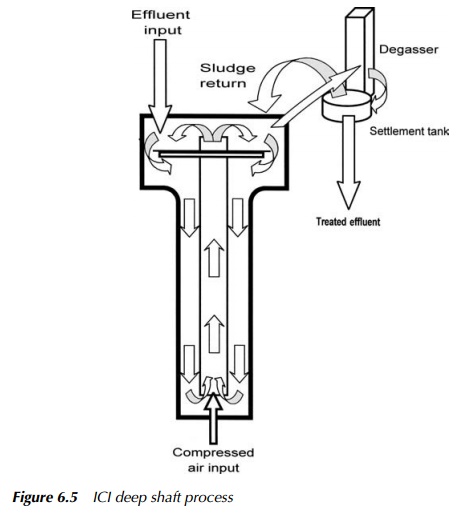Chapter: Environmental Biotechnology: Aerobes and Effluents
Deep Shaft Process - Aerobes and Effluents
Deep Shaft Process
In many respects this is an activated sludge derivative, which was
borne out of ICI’s work on the production of proteins from methanol in the
1970s. Figure 6.5 shows the main features of the system, which is based around
a shaft 50 – 100 metres deep.

The shaft contains the
wastewater to be treated, compressed air being blown in at the base, which
travels up the central section, setting up an opposing counter flow in the
outer part of the shaft. Screened secondary effluent is allowed to settle and a
portion of the sludge produced is returned to the input zone, just as in a
traditional activated sludge tank, though degassing is required to remove
nitrogen and carbon dioxide bubbles from the floc to allow for proper sedimentation.
The high pressures at the
base force far more oxygen into solution than nor-mal, which aids aeration
enormously and allows the process to achieve an oxygen utilisation of around
90%, which is some 4.5 times better than conventional acti-vated sludge systems.
The bubble contact time produced, averaging 90 seconds or more, is over 6 times
longer than in standard diffused air systems. It has a low footprint, making it
ideal for use in restricted areas.
Related Topics